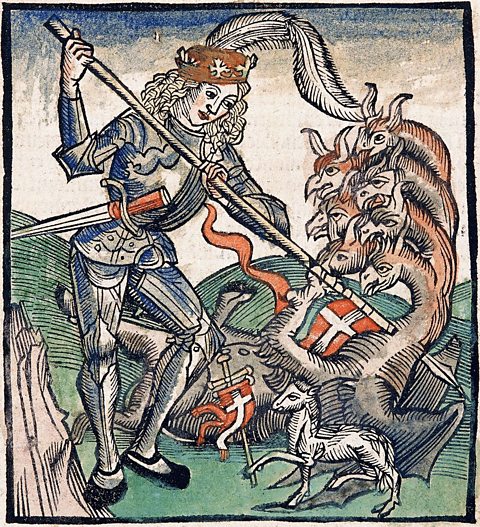You may think you know St George - he slayed a dragon, saved a princess, and gave England one of the most recognisable flags in the world.
But there are some things about him that might surprise you. Here are a few.

St George wasnât English
Letâs start with the big one. He may be a huge figure in English culture but, as it turns out, he was probably born about 2,000 miles away from England.
Itâs thought he was from Cappadocia, an ancient region in present-day Turkey.

He never visited England
Not only was he not from England, itâs likely he never even set foot on English soil either.
The connection with the country comes from King Richard I who, when on his crusades, purportedly placed his army under the protection of St George.
This is also why St Georgeâs cross is on the English flag: St George was traditionally depicted carrying or wearing a red cross on white background, and King Richard adopted it in his honour.
But England doesn't actually own the design of its flag. An âannual tributeâ for the use of the flag used to be paid to the Italian city of Genoa, but those payment stopped around 250 years ago, with some in the city asking for them to be backdated.
He might not have even existed
Well, now itâs just getting silly.
There are so many myths and legends around St George (dragon, anyone?) that itâs hard to separate fact from fiction. It could be that his actions and adventures were hyperbolised when they were written down, or even that he was entirely based on an ancient pagan myth. No one really knows, though.
Heâs not just the patron saint of England
Leaving aside his possible non-existence for a moment, England doesnât have a sole claim to St Georgeâs patronage.
Other countries that he is the patron saint for include Ethiopia, Lithuania (after St Casimir), Georgia and Portugal. Heâs even the patron saint of some cities: Freiburg, Moscow and Beirut to name a few.

The dragon probably wasnât real
Okay, so you might have guessed this one. But itâs not just that dragons are mythical creatures - the legend came about long after George died and achieved martyrdom.
The earliest recording of the saint slaying a dragon dates around the 11th century, but only became popular knowledge in the 15th century, when it was printed in a book called The Golden Legend. George however is thought to have been born in the 3rd century and died in the early 4th century.
This article was published in April 2019 and last updated in 2023
Why is St Patrick's Day so popular in America?
The patron saint of Ireland's popularity in the USA and across the globe.

How can I be a historian?
Learn how to uncover the past here.

The Crusades
The Crusades lasted centuries - find out more about them here.
